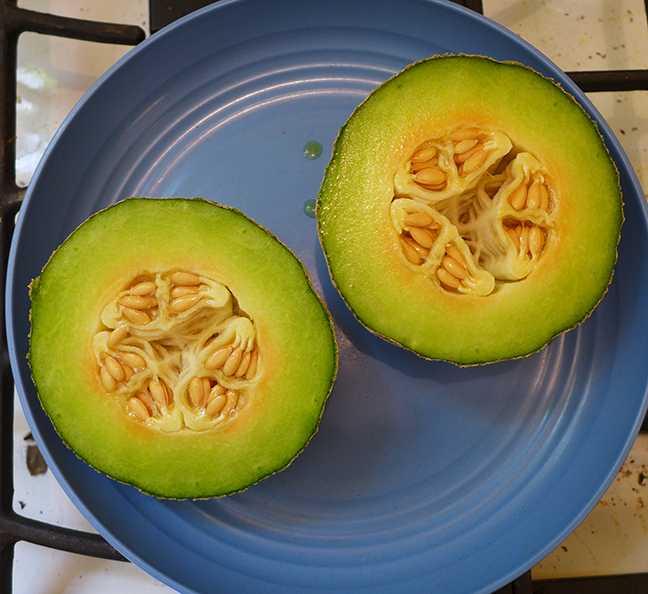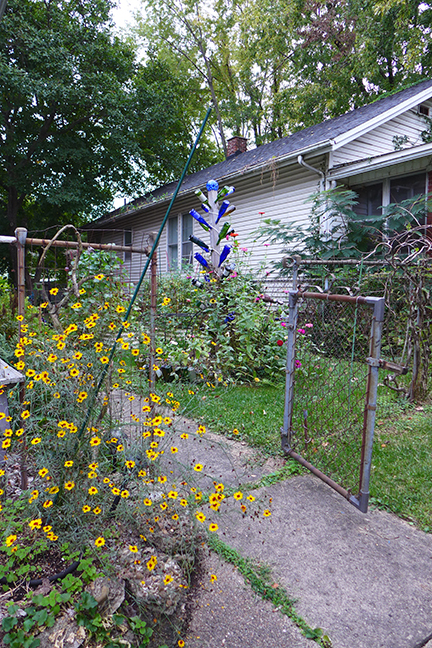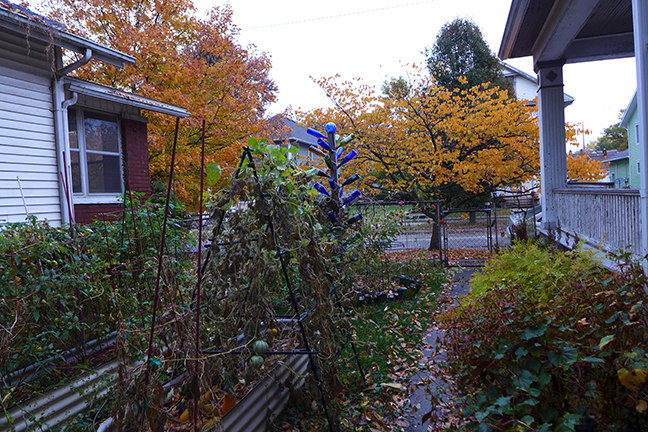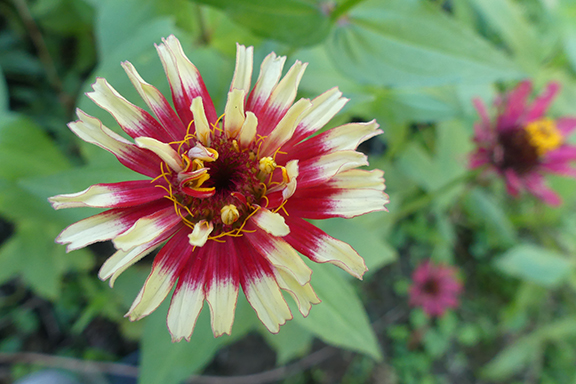September in my garden began at daybreak on September 1 when I got my first good look at the damage that happened because of insufficient water while John and I were on vacation. I immediately set up my sprinklers to bring moisture back to my plants, but some were already in desperately sorry shape. I spent a day watering and watering and watering.
Some plants were clearly done for. But then there were others. Do you know what doesn’t mind hot, dry weather? Lima beans! I had a lot of them. You know what else likes the heat? Sweet potatoes! And what else was barely phased by the lack of water? My strip of prairie plants by the street! And you know what else wasn’t phased by the poor conditions? Tree of heaven! That last one I really wished would have been negatively impacted. I’m so tired of that awful, invasive tree.
As I looked around my garden, I started to discover some gems hidden among the dry, brown leaves. Most notable among them were the monarch caterpillars quietly munching milkweed everywhere I looked. They were a good reminder that many things were still ok. My garden was also filled with yellow garden spiders trying to keep the pests at bay.
Of course, I also found some bad bugs that were ready to strip my tomato plants. At the start of the month, I discovered a family of yellow-striped armyworms all over a section of tomatoes. I’d never seen them before, so at first I didn’t know if they were good or bad and left them alone just in case. Then a little voice in my head said I really needed to do my research, so I did and headed straight back outside to kill them all.
Later in the month I discovered two tobacco horn worms poised to destroy more tomatoes–except by the time I spotted them they had been parasitized by wasps and doomed to soon die. The wasps lay eggs under the caterpillar’s skin, the pupae hatch and eat the caterpillar alive, then they eat their way out of the caterpillar and form white cocoons sticking off of the caterpillar. Interesting and also pretty gross.
Also kind of gross was what I realized when I had a chance to observe so many monarch caterpillars: the poop A LOT. In thinking about it, Eric Karle really missed out on some potential children’s book gold in The Very Hungry Caterpillar. Watching these monarch caterpillars, it should have been a poop book as much as an eating book. His book could have been even more popular and could have taught a valuable science lesson!
There were plenty of other bugs, both good and bad, around my garden. And zinnia blooms. I love zinnias! The more I look at their flowers, the more interesting details I start to see. And my final prairie plants bloomed so I could see what they look like. The one the butterflies loved most (by far) was the purple button blazing star. It was not uncommon for me to see multiple monarch butterflies at a time crowded onto the two flower spikes.
In the vegetable department, I got plenty of tomatoes from my plants–enough to do some cooking. I also got some mini melons, but I’m still terrible at judging when they’re ripe, so none were exactly perfect when I ate them. I had three varieties, and apparently none are kinds that release from the vine when they’re ripe. I’ll keep trying, though. I think they’re fun. I also got two butternut squashes and one zucchino rampicante squash. The zucchino rampicante can be eaten as a winter squash, but since I started them late I wasn’t going to have any that were mature enough for that. Luckily they also function like a summer squash when they’re young. We ate that one in a pesto pasta dish with turkey meatballs. It was delicious.
Only two days after my September 1 watering blitz, we got an historic downpour with something like 3″ of rain coming down in only an hour or so. It was an incredible amount of rain. And then it didn’t rain by any real measure for the rest of the month. I was out watering every weekend. By the end of the month, everything was doing relatively well and had mostly come back from the brink. By the very end, even the final couple plants that had looked completely dead were beginning to show signs of life. Hopefully they don’t burn through all their energy reserves growing a lot of new leaves just before winter and then start next spring without enough stored energy to come out of dormancy.
(Below is a photo collage. As always, click on any image for a little more information about what’s in it.)




















































































































































































































































































































































































































































































































































































































































































































































































































































































































































































